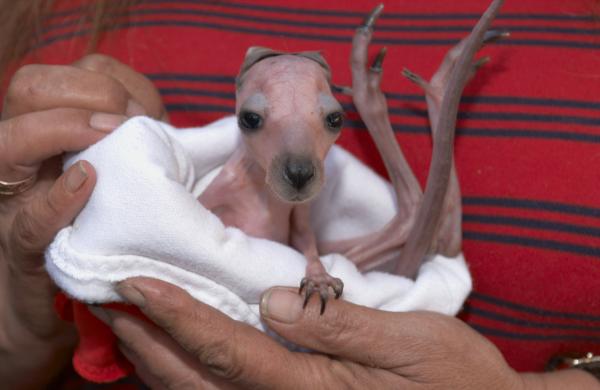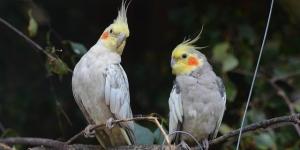What to Feed a Baby Wallaby


Wallabies belong to the same family as kangaroos and may well be as adorable and dainty as their larger counterparts. Wallabies are marsupials of small to medium-sized length, generally found across Australia and New Guinea. They are born fragile and frail and after birth they continue to develop and feed inside their mothers’ pouches. Baby wallabies are often called joeys and will grow to develop strong back legs to help them fight against predators. However, too often wallabies find themselves running back to their mothers’ pouches looking for comfort.
In this OneHowTo article we explain what to feed a baby wallaby.
Regulate body temperature
Baby wallabies will continue to develop inside their mothers’ pouches after birth. Inside the pouch they will receive heat from the mother as they are unable to regulate their own body temperature. Consequently, it is important to make sure that when feeding an orphan baby wallaby that body temperature is kept stable. By using an electrical blanket, you may be able to maintain an average temperature of 30-32 °C (86-90 °F). Aim to wrap a pouch around the electrical blanket and then place some cloth layers in between to prevent too much heat reaching the wallaby.

Limit handling
In periods of stress, wallabies will not want to be fed. If they find themselves in a new environment they will most likely be scared and in a stage of alert. Once you have created a warm artificial pouch allow the wallaby to get used to the new environment for a few hours. Reduce handling to as little as possible, preferably only to the times of feeding.
Optimum diet
While wallabies are herbivores and will feed from leaves and grass, during the early stages of life they need to be fed milk. As mammals, baby wallabies feed from their mothers, which supply them with all the essential nutrients needed for growth. During the lactation period, wallabies may need different types of milk for optimal growth. In Australia, the Wombaroo company offers milk replacers for different marsupials adjusted to their age and family. These milks are sold in powdered form and will need to mixed with warm water.
Depending on the size of the baby wallaby, you may need to use a bottle and teat or a syringe. Make sure that the milk is warm and feed the wallaby carefully without removing it from the pouch.
Solid food introductions
As soon as the wallaby is old enough to leave the pouch, some solid food can be introduced. Some recommended options to start include fresh leaves with the roots kept on, and other fruits and vegetables such as apples, lettuce and carrots. These can be hanged inside the pouch to ease up the transition process of the wallaby out of the pouch. The speed at which each wallaby grows may differ and not all wallabies may be attracted to human food. Allowing the wallaby to explore the new environment and start foraging food may be the best learning experience.

If you want to read similar articles to What to Feed a Baby Wallaby, we recommend you visit our Pets category.






